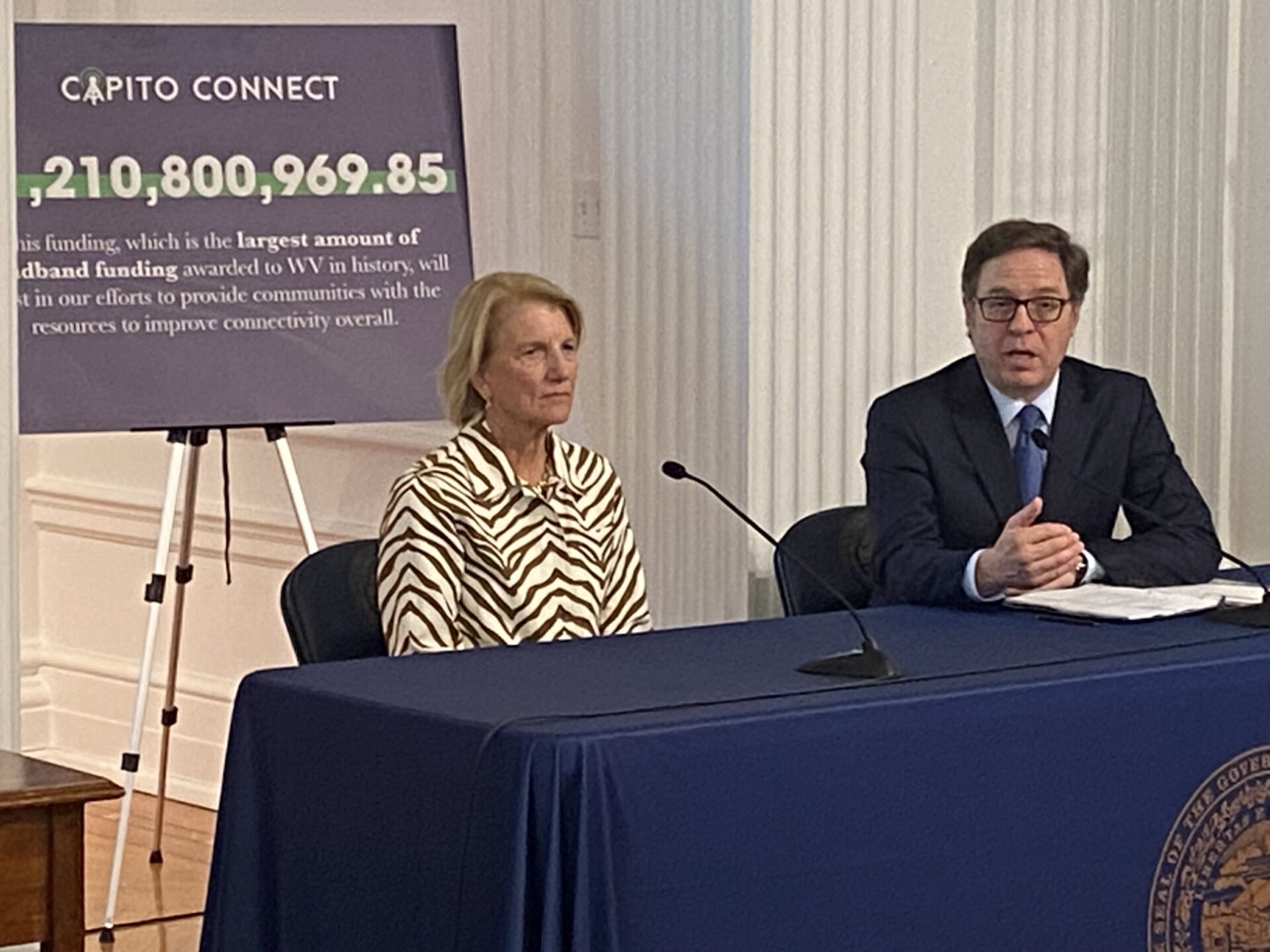Plans to connect the last 300,000 locations in West Virginia with affordable internet went public on Friday.
In laying out the plan to spend more than $1.2 billion federal dollars for broadband deployment, Sen. Shelley Moore Capito, R-W.Va., said she asked an internet expert a few years ago what it would take to get the last West Virginian connected.
“The things he said were time and money,” Capito said. “Well, we’ve got the money now, the time should be condensed.”
Gathered in the Governor’s Reception Room at the State Capitol, state and federal leaders explained that Implementing the Broadband Equity, Access, and Deployment (BEAD) Program dictates spending the still unsecured funding on connecting first the unserved then the underserved. The funds will be released in installments after the state’s five-year action plan, due August 12, is approved. You can see the West Virginia Deployment timeline here.
West Virginia Office of Broadband director Kelly Workman said after the submitted plan, comes a series of proposals.
“Up next is our initial proposal,” Workman said. “The initial proposal includes 20 different sections. Basically, the state of West Virginia will be telling the federal government how we intend to spend this money, where we will spend it, how we will execute our challenge process and so that will go through those 20 sections and answer all those questions.”
A national broadband project leader, Assistant U.S. Secretary of Commerce and chief of the National Telecommunications and Information Administration, Alan Davidson said before he writes a big check, the state must pass a big homework assignment.
“There are a whole series of requirements about how the money will be spent, how the grants will be given, and just making sure that there’s good oversight,” Davidson said. “So this money gets spent quickly, but wisely, and that we’ve got good hooks in at the back end to make sure it’s getting spent the right way.”
Davidson pointed out that many West Virginians are eligible for the $30/Month Affordable Connectivity Program.
The roadblocks to statewide broadband connectivity have always been the high provider costs and challenges of running cable up the last mountain or the end of the deepest hollow.
Workman says concerns over equipment supply chain issues and bucket trucks back ordered have been planned for and addressed.
“They have scaled up,” Workman said. “We are hearing that most of the supply chain issues are leveling out. The providers are telling us that it can be managed. We proactively reached out to the providers in West Virginia, to say, what would you like to see in this plan? What can we do to facilitate your expansion to the most rural parts of our state? All of their comments will be integrated into our plan. And I think that that process in our relationships with those providers, is extremely beneficial to us going forward.”
Davidson says his boss, President Biden, likes to say this isn’t just a connection program, it’s a new jobs program, creating up to 150,000 nationwide.
“And we want to make sure that those jobs are filled by the communities that are being served by these networks,” he said. “This is a wakeup call for folks. Hey, we’re saying these jobs are coming and we’re trying to do all we can to make sure that people are trained up and ready for them.”
West Virginia is hoping to secure the first 20 percent of the funding, about $240 million, this time next year. The remaining 80 percent, roughly $960 million, will be distributed in 2025 once the federal government approves the state’s final proposal and reviews how well it complied with its initial proposal. The plan outlines statewide broadband connectivity to be completed by 2028.
